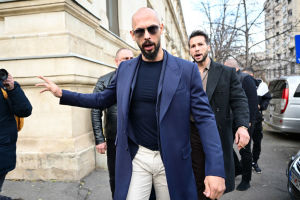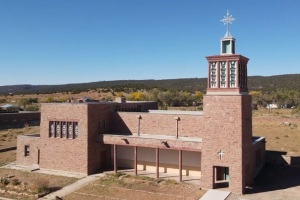CMDA Cautions Stanford Against Use of Embryonic Stem Cells
The Christian Medical & Dental Associations' vice president praises Stanford University's efforts to expand stem cell research with its soon to be unveiled facility – possibly the nation's largest at 200,000 square feet – but urges researchers not to pursue embryonic research.
Next Wednesday, officials from the university's School of Medicine will mark the official opening of the Lorry I. Lokey Stem Cell Research Building in Palo Alto, Calif. Set to house 550 researchers in its four-story building, faculty members and staff, university officials brag their building will be the country's, if not the world's, largest stem cell research facility.
Another bragging point is that it was built entirely with private and state money. "We were able to do this without any federal money," said the school's media relations director, Ruthann Richter.
The building's name sake and Business Wire founder, Lorry Lokey, donated $75 million to the construction of the building. Additionally, the California Institute for Regenerative Medicine (CIRM) awarded the university a $43.6 million in grants for modern facilities. Stanford says its efforts to construct the building without federal grants provides the facility a buffer from "federal embryonic stem cell politics."
CMDA Vice President Gene Rudd praised the research center. "To Stanford, I say hoorah, go for it. We need more stem cell research," he commented.
At the same time, he warned against embryonic stem cell research, saying it's both unethical and unnecessary. He pointed out that there are "scores of treatments using adult stem cells."
Rudd's organization has filed a lawsuit against the government for its efforts to federally fund research based on these ethical concerns. The case is currently waiting appeals hearing that will determine its legal standing. In the meantime, the federal court system has allowed for the National Institutes for Health and its grantees to continue with embryonic stem cell research.
Religious leaders have long established that using stem cells derived from human embryos is wrong. The Ethic and Religious Liberty Commission states on its website that "from the moment that an egg is fertilized by the sperm, the embryo contains all the genetic material necessary to develop into a full-grown human being. Given the right environment, the embryo will naturally develop into a baby human. The loss of this embryonic life is the main ethical concern surrounding embryonic stem cell research."
Richter acknowledged the current controversy surrounding stem cell research. "There's kind of a state of limbo with stem cell funding."
According to Richter, the Lorry I. Lokey Stem Cell Research Building will study a wide range of stem cells including adult stem cells and cancer stem cells.
"What we're really well known for is our cancer stem cell research," she said. The facility, however, will also conduct studies using embryonic stem cells using state-raised funding from CIRM, she added.
Rudd believes stem cell research has "the hope of improving life" and of bringing an end to ills such Parkinson Disease and spinal cord injuries – all of which Stanford researchers plan to study in their new facility. But Rudd and others continue to urge against embryonic stem cell use.
"The end doesn't justify the means," he said.




























